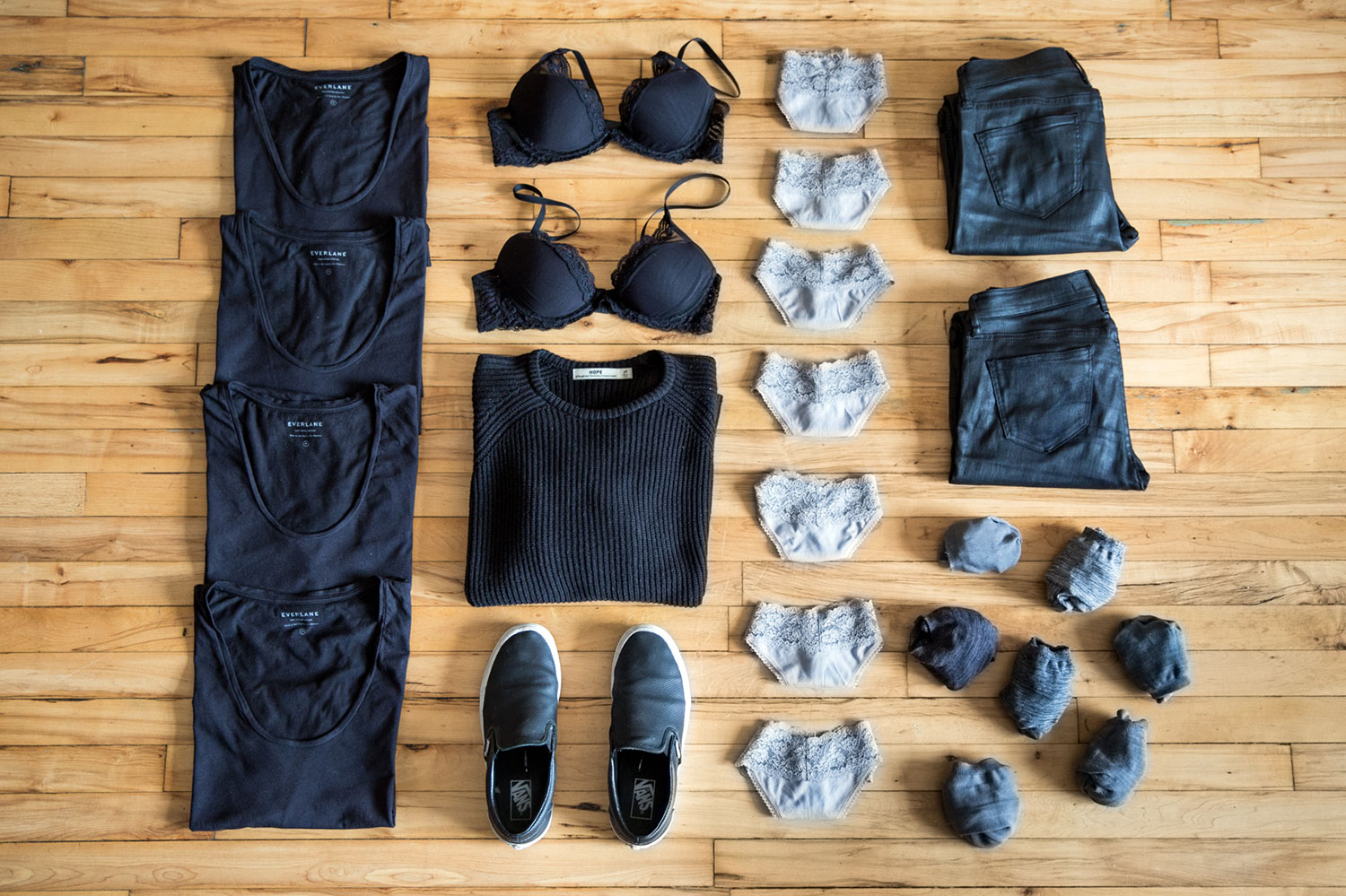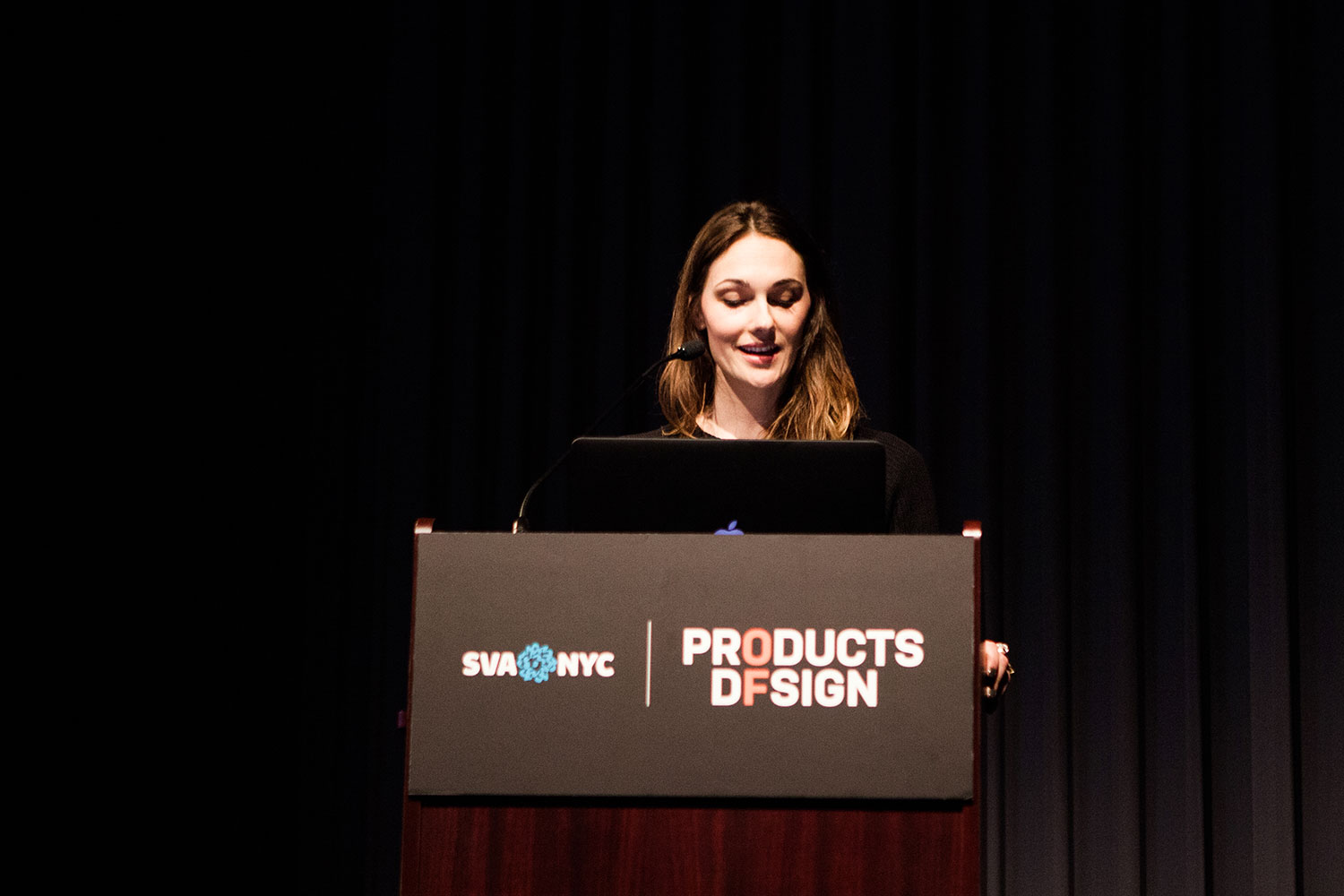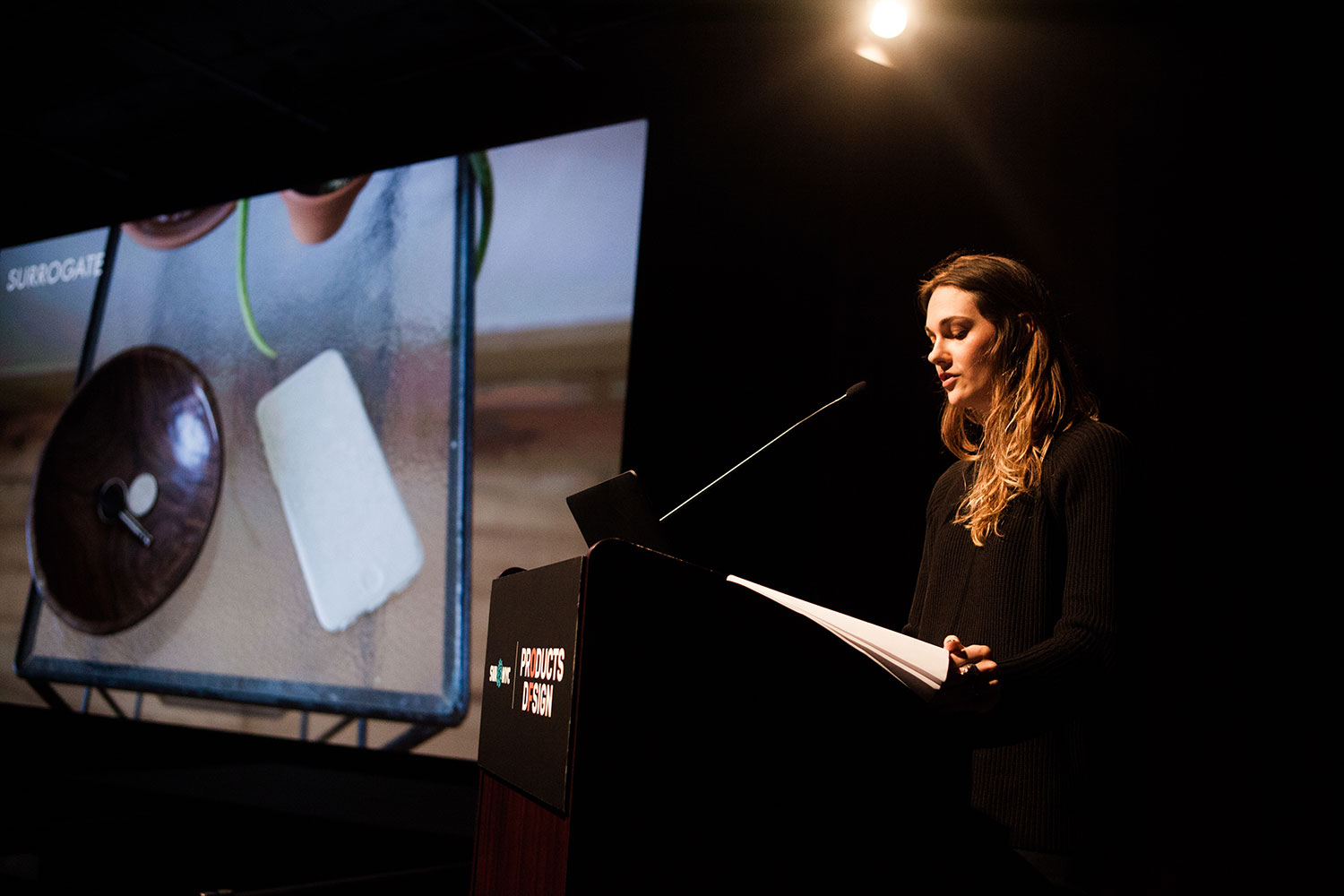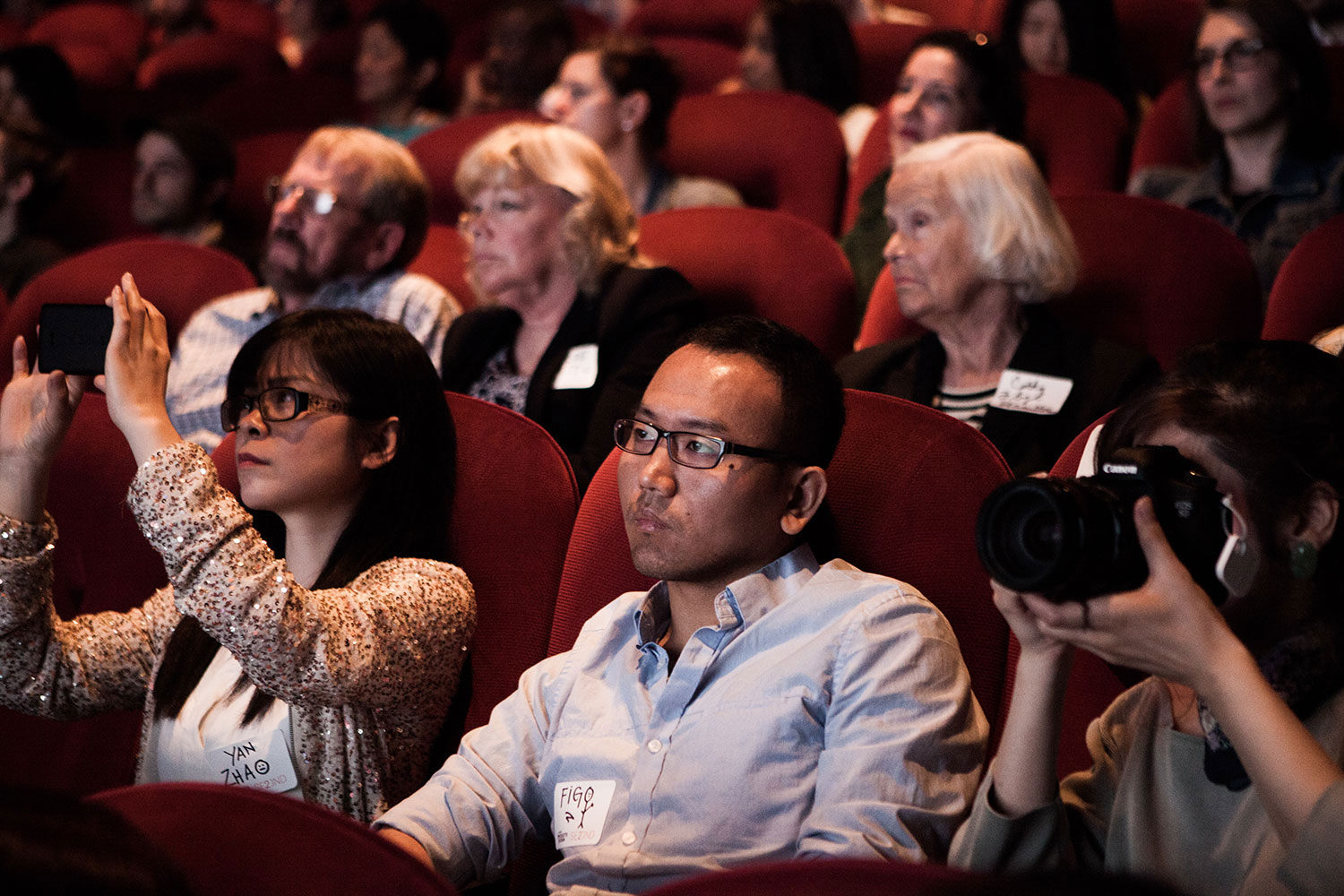MASTERS THESIS: The Void: Finding Value in Nothing, by Lucy Knops
The objective of Lucy Knops’ master’s thesis, The Void: Finding Value in Nothing, was to reframe the “role of absence” in people’s daily lives. She began on a conceptual level by asking simple questions: What if nothing could be something? What if we could add to our lives by taking away more? Can absence give us substance?






As a way to “subtract” from her daily life, Lucy spent the entirety of her thesis—a total of 228 days—wearing the same uniform of clothing.
Lucy explored the territory of the void as an activity of inquiry—much of it three-dimensionally. The objects, services, interventions and experiences created around the topic of The Void are materializations of the abstract theories that ground and inspire the work; they are a way to make them tangible and available for consideration. The resultant family of offerings, created over the course of a year, introduce opportunities for people to consider alternative ways to navigate their daily actions—and their daily choices. Ultimately, The Void offers a means for people to invite absence into their lives.
Each of the cement spheres above contains within it a void in the shape of a platonic solid.
Lucy first set out to gain a general understanding of the philosophical and scientific qualities of the void—from Aristotle’s argument that there is no such thing as a physical void, to Heidegger’s provocation “Why is there something rather than nothing.” Rounding things out, Lucy researched recent advances in understanding qualities of the void with the Higgs field—an energy field “that exists everywhere in the universe.”
Both primary and secondary research pointed Lucy down the path of exploring the creative and neurological benefits of silence, boredom and intentional downtime. She came to call this this work “structured nothing.”
Early inspiration came from inspiring artists who have used absence as their material. These range from Yves Klein, who in 1958 exhibited a gallery absent of any work, challenging the very notion of exhibition; to John Cage, who exemplified the power of music without sound with his composition 4’33’’; and Robert Rauschenberg, who showed viewers the value of something that they will never see with his Erased de Kooning Drawing. Consideration of these works led Lucy to a key insight: when utilizing absence as a material, structure is a requirement.
Lucy expanded her purview by looking into the ways that the void—and absence—can be applied to human behavior. Artists and writers have long known that there are creative benefits to taking pause; to inviting absence into their schedules. Indeed, often our best ideas are born when we stop directly focusing on a problem or project. Both primary and secondary research pointed Lucy down the path of exploring the creative and neurological benefits of silence, boredom and intentional downtime. She came to call this this work “structured nothing.”
Our brains need nothing too. It turns out that when we give our brains a break to do nothing, rather than shutting down, they are surprisingly active.
A diverse range of recent studies add scientific grounding to the sentiment many artists and writers know intuitively, or have reported anecdotally: Our brains need nothing too. It turns out that when we give our brains a break to do nothing, rather than shutting down, they are surprisingly active. A complex set of brain circuits—know as the Default Mode Network—stir to life when we have the opportunity to let our minds wander. Ferris Jabr, in an article for Scientific American, summarizes the findings from recent research: “Downtime replenishes the brain’s stores of attention and motivation, encourages productivity and creativity, and is essential to both achieve our highest levels of performance and simply form stable memories in everyday life. A wandering mind unsticks us in time so that we can learn from the past and plan for the future. Moments of respite may even be necessary to keep one’s moral compass in working order and maintain a sense of self. “ Lucy’s work takes these findings into consideration and uses design lenses to foster opportunities for absence. The offerings can be organized under three umbrellas: Addition Through Subtraction, Experiencing Absence, and Fostering Absence.
Addition Through Subtraction: Nothing to Wear and Uniformd
Addition Through Subtraction deals with the paradox that we can add value to our lives through subtraction. Lucy tested this hypothesis in a very personal way. From the very beginning of the thesis process, Lucy made the decision to utilize herself as a test subject and to completely immerse herself in her topic. As an inescapable way to bring The Void into her daily life through subtraction, she spent the entirety of her thesis—a total of 228 days—wearing a strict uniform she curated for the project, titled Nothing to Wear. The purpose of Nothing to Wear was to design absence into her own life “by subtracting from her routine the daily decision of what to wear.”
Over the course of eight months, the benefits of wearing a uniform became obvious, and so she designed and tested ways for others to tap into the benefits of “uniform.” After prototyping a uniforming service with two users over the course of a month, Lucy developed the service offering, Uniformd. Its aim is to challenge the fact that, as a culture, we spend far too much time, resources and cognitive energy on producing, advertising, buying and choosing what we wear. As part of the service, Uniformd agents provide members with guidance and an allotment of quality garments that are selected specifically because they will wear well over time.
The business is modeled out as a partnership with like-minded brands that produce the garments curated by Uniformd. Further user research led to a key feature of the service: the ability for members to share their experiences, and to track their progress through individualized pages on the Uniformd site. The Uniformd blog features members who have hit certain time milestones—one month, three months, six months, and one year. Contrasting with the current glut of daily fashion blogs that focus on people’s clothing and product choices, the Uniformd blog highlights the reflective thoughts and experiences of its members.
“A Minute” is a mobile app that lets friends send and receive minutes to do absolutely nothing.
Experiencing Absence: Minute of Silence, Surrogate, and Structured Nothing
Lucy explored a multitude of other means to share The Void with her audience. Experiencing Absence took many forms—from implementing a Minute of Silence at the beginning of each class period in the MFA Products of Design studio, to prototyping ways to share these minutes with people...remotely.
Students engaged in “a minute of silence” at the start of every thesis class
A Minute is a mobile app that provides a means for friends to send and receive minutes to do absolutely nothing. It recognizes that our phones are the source of much of our distraction, but aims to utilize the device as an ally—the necessary structure for accessing the void.
“Yes, we live in a world where a fake phone has value.”
Another iteration went so far as to replace people’s phones with non-functional ones. Surrogate is a cement replica of one’s phone. It is intended to be swapped out for the phone, but carried just as a regular phone. One of the test subjects used the cement surrogate as a way to put away his phone when arriving home from work. “It enabled him to concentrate on spending time with his family,” Lucy remarked, “while still giving him the tactile ‘feeling’—the security—of feeling the phone in his pocket. So yes, we live in a world where a fake phone can have significant value.”
A third offering under the umbrella of Experiencing Absence was called Structured Nothing— a public intervention that took place inside a New York City subway car during an evening commute. 136 pieces phone-shaped pieces of Foamcore were surfaced with bubble wrap on one side, and were handed out to subway passengers, inviting them “to take a minute to do nothing.”
Following the facilitation of a co-creating session with members of her target audience, Lucy developed a series of speculative narratives imagining the role of absence in the future.
Fostering Absence: Penelope
The final category, Fostering Absence, built upon the research into the cognitive benefits of doing nothing. Following the facilitation of a co-creating session with members of her target audience, Lucy developed a series of speculative narratives imagining the role of absence in the future.
Penelope was the final offering for fostering absence. It is an “endless weaving loom” that speculates a future where our cultural attitudes towards absence have shifted; where absence is valued as a critical mental state. When using the loom, process takes precedent over the output of one’s work. In Homer’s Odyssey, in order to keep unwanted suitors at bay during his absence, Queen Penelope secretly tended to her love for Odysseus by weaving all day and unraveling her work by night. With Penelope the loom, one privately tends to her or his practice of absence.
As explored through multiple design lenses, Lucy hopes that the totality of the thesis work of The Void illustrates the great potential of absence in our daily lives, helping us to to honor the value of nothing, and to encourage us to take the time—even just for a moment—to embrace it.
Email her at lucy[at]lucyknops[dot]com.


















